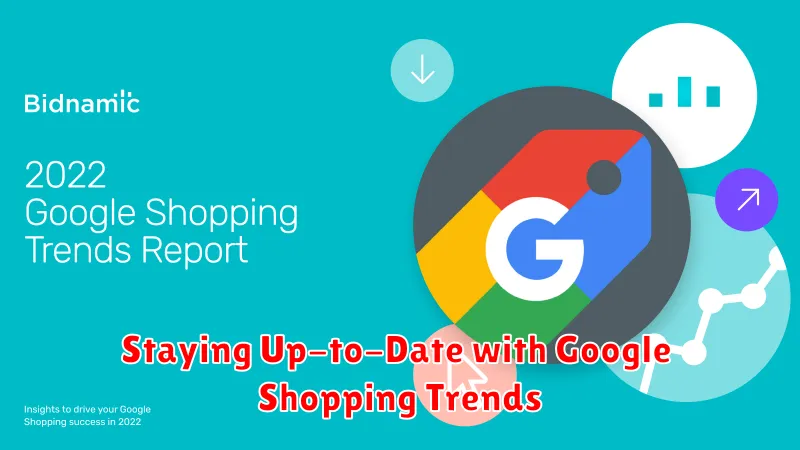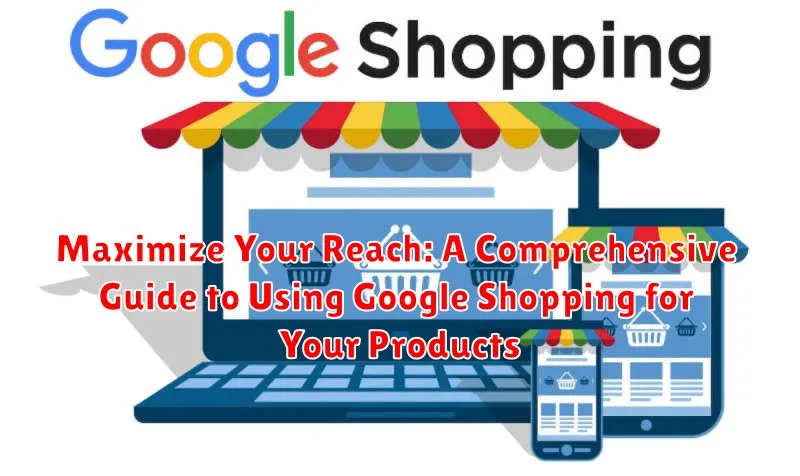In today’s competitive e-commerce landscape, visibility is key. Google Shopping offers a powerful platform to showcase your products directly to potential customers actively searching for what you offer. This comprehensive guide will equip you with the knowledge and strategies to effectively leverage Google Shopping, maximizing your product reach and driving sales growth. Whether you’re a seasoned online retailer or just starting out, understanding how to optimize your product listings and campaigns within Google Shopping is crucial for success.
From setting up your Merchant Center account and crafting compelling product feeds to mastering bidding strategies and leveraging campaign optimization techniques, this guide covers every aspect of utilizing Google Shopping. Learn how to harness the power of product titles, descriptions, and high-quality images to attract potential buyers. Discover the intricacies of campaign structures and gain valuable insights into measuring and analyzing your performance data. Maximize your reach and transform your online presence with this essential guide to Google Shopping.
Introduction to Google Shopping
Google Shopping offers a powerful platform for businesses to showcase their products directly to potential customers actively searching for what they offer. Unlike traditional text-based ads, Google Shopping displays product images, prices, and brand names prominently, capturing user attention and driving traffic to your online store.
This visual approach makes it easier for shoppers to compare options and find precisely what they need. When a user searches for a product on Google, Shopping ads appear at the top of the search results page, often above organic listings. This prime placement ensures maximum visibility and increased chances of clicks and conversions.
Google Shopping leverages your product data feed to match user searches with relevant products. This data-driven approach ensures highly targeted advertising, connecting your offerings with shoppers who are actively looking for them. Therefore, a well-optimized product feed is essential for success in Google Shopping.
Setting Up Your Merchant Center Account
Your Merchant Center account is the foundation of your Google Shopping presence. It’s where you’ll submit your product data and manage how your products appear to shoppers. Setting it up correctly is crucial for success.
Begin by navigating to the Google Merchant Center website and clicking the “Sign up” button. You’ll need a Google account to proceed. Once signed in, you’ll be guided through the setup process. This includes providing crucial information about your business, such as your business name, address, and website.
Claim and verify your website URL. This proves to Google that you own the website you list and helps build trust. You’ll be given several verification options, including adding a meta tag to your site’s homepage or uploading an HTML file.
Next, you’ll need to configure your shipping settings. Specify your shipping rates and regions. Accurate shipping information is essential for a positive customer experience.
Finally, link your Merchant Center account to your Google Ads account. This connection is vital for creating and running Shopping campaigns and allows you to manage your advertising efforts effectively.
Creating and Optimizing Your Product Feed
Your product feed is the heart of your Google Shopping campaign. It’s a detailed inventory of your products, providing Google with all the necessary information to display your listings effectively. A well-optimized feed is crucial for visibility and conversion rates.
Key elements of a successful product feed include:
- Accurate product titles: Use clear, concise titles that accurately reflect the product being sold.
- Detailed descriptions: Highlight key features and benefits to entice potential customers.
- High-quality images: Showcase your products with professional, high-resolution images.
- Correct pricing and availability: Ensure accurate pricing and up-to-date availability information to avoid customer frustration.
- Unique product identifiers (GTINs, MPNs, brand): These identifiers help Google accurately match your products with relevant search queries.
Regularly updating your product feed is essential to maintain accuracy and reflect changes in inventory, pricing, and promotions. This ensures your listings remain relevant and competitive.
Managing Your Google Ads Campaigns
Effectively managing your Google Ads campaigns is crucial for maximizing your return on investment. Campaign structure is key. Organize your campaigns by product categories or brands for granular control over bidding and targeting.
Bidding strategies play a vital role in your campaign’s success. Experiment with different automated bidding strategies like Maximize Clicks, Target ROAS, or Enhanced CPC to find what works best for your business goals. Manual bidding offers greater control but requires more active management.
Regularly monitor your campaign performance. Track key metrics such as impressions, clicks, click-through rate (CTR), conversion rate, and cost per conversion. Use this data to identify areas for improvement and optimize your campaigns for better results.
Budget allocation is also essential. Distribute your budget strategically across different campaigns and product groups based on their performance and potential. Regularly review and adjust your budget allocation to maximize your ROI.
Targeting the Right Audience
Reaching the right customers is crucial for Google Shopping success. Effective targeting ensures your products are shown to users actively searching for what you offer, maximizing your return on investment.
Location Targeting allows you to specify where your ads will show. This is essential for businesses operating in specific regions or countries. You can target by country, state, city, or even zip code. Consider your shipping capabilities and target accordingly.
Demographic Targeting lets you refine your audience based on age and gender. If your products appeal to a specific demographic, use this feature to focus your reach. For instance, a clothing retailer specializing in women’s fashion can target their ads specifically to women.
Remarketing is a powerful tool to re-engage users who previously interacted with your products. By showing targeted ads to these users, you can increase conversions by reminding them of their interest.
Bidding Strategies for Google Shopping
Bidding effectively is crucial for maximizing your return on investment in Google Shopping. Choosing the right strategy depends on your business goals and budget.
Manual CPC bidding allows for granular control. You set bids for individual product groups, giving you flexibility to prioritize certain products. This requires significant time investment and market knowledge.
Automated bidding strategies leverage Google’s algorithms to optimize bids based on your conversion data. Maximize Clicks aims to drive the most traffic to your products. Enhanced CPC adjusts your manual bids to increase conversions. Target ROAS helps you achieve a specific return on ad spend. Maximize Conversion Value focuses on generating the highest possible conversion value within your budget.
Selecting the optimal bidding strategy often involves experimentation. Start with a strategy aligned with your primary goal and monitor performance closely. Be prepared to adjust your strategy based on the data.
Tracking and Measuring Your Results
Tracking your Google Shopping campaign performance is crucial for optimizing your return on investment. Google Ads provides robust tools to monitor key metrics. Focusing on specific data points will provide actionable insights into your campaign’s effectiveness.
Begin by monitoring your conversion tracking. This measures how many clicks on your Shopping ads lead to desired actions on your website, such as purchases or sign-ups. Accurate conversion tracking is fundamental to understanding your campaign’s profitability.
Next, analyze your return on ad spend (ROAS). This metric reveals how much revenue you generate for every dollar spent on advertising. A higher ROAS indicates a more efficient and profitable campaign.
Regularly review your click-through rate (CTR). This metric measures the percentage of users who click on your ad after seeing it. A low CTR may suggest the need to improve your product titles and images.
Finally, pay attention to your impression share. This data shows how often your ads are shown compared to the total number of times they could have been shown. A low impression share could indicate opportunities to increase your visibility.
Best Practices for Google Shopping Success
Optimizing your product data is crucial for Google Shopping success. Ensure your product titles and descriptions are accurate, detailed, and include relevant keywords. High-quality images are also essential for attracting clicks. Use multiple images showcasing different angles and features of your product.
Regularly review and update your product feed to reflect changes in inventory, pricing, and promotions. This keeps your listings current and accurate, improving your campaign’s performance. Staying organized is key, so implement a system for managing your product data effectively.
Segment your product groups strategically. This allows you to tailor bids and target specific product categories more effectively. Granular control over your product groups helps optimize your spending and improve return on investment.
Leverage customer reviews to build trust and social proof. Positive reviews can significantly influence purchase decisions. Encourage satisfied customers to leave feedback on your products.
Common Mistakes to Avoid
Successfully navigating Google Shopping requires diligence and attention to detail. Avoiding common pitfalls can significantly impact your campaign’s performance. Here are some key mistakes to steer clear of:
Poor Product Data
Inaccurate or incomplete product data is a major culprit for underperforming campaigns. Ensure your product titles, descriptions, and attributes are accurate, comprehensive, and follow Google’s guidelines. Missing key information can lead to your products being disapproved or shown for irrelevant searches.
Neglecting Negative Keywords
Failing to utilize negative keywords can drain your budget. Regularly review your search term reports and add negative keywords to prevent your ads from showing for irrelevant searches that are unlikely to convert.
Ignoring Mobile Optimization
With the rise of mobile commerce, neglecting mobile optimization is a critical error. Ensure your product images and landing pages are mobile-friendly to provide a seamless shopping experience for users on all devices.
Leveraging Google Shopping Promotions

Promotions within Google Shopping can significantly entice potential customers and boost your product visibility. Offering promotions like discounts, free shipping, or gifts with purchase can make your listings stand out from competitors.
Setting up promotions in your Merchant Center account is straightforward. You can choose from several promotion types, including:
- Percent discount: Offer a percentage off the original price.
- Monetary discount: Offer a fixed amount off.
- Free gift: Include a free item with a purchase.
- Free shipping: Waive shipping costs.
Clearly defining the promotion’s requirements, such as minimum purchase amounts or specific product eligibility, is crucial. Accurate promotion setup ensures a smooth customer experience and prevents confusion.
Staying Up-to-Date with Google Shopping Trends

In the dynamic landscape of e-commerce, staying ahead of the curve is crucial for success. Google Shopping evolves constantly, with new features, algorithm updates, and consumer behavior shifts impacting your product visibility and performance. Staying informed about these trends is essential to maximize your reach and ROI.
Regularly consult official Google resources. The Google Merchant Center Help and Google Ads Help sections provide valuable insights into the latest changes and best practices. Subscribe to relevant blogs and newsletters to receive timely updates.
Analyze competitor strategies. Observing how your competitors adapt to trends can offer valuable lessons. Pay attention to their product titles, descriptions, and bidding strategies.
Embrace data analysis. Monitor your Google Shopping campaign performance metrics closely. Track click-through rates, conversion rates, and average order values to identify areas for improvement and capitalize on emerging trends.

